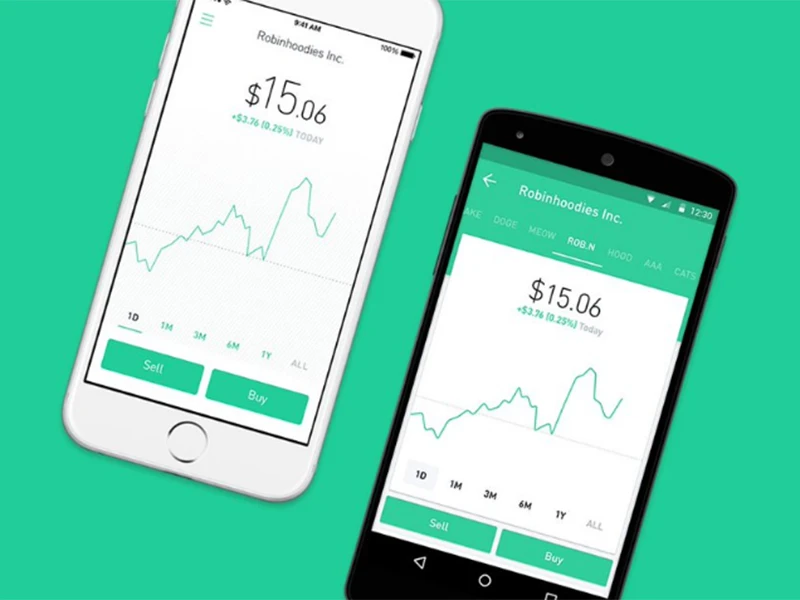- Insights
- Digital Experience
- Article
In customer experience and user-centered design, why fintechs are beating big banks

In today’s digital landscape, providing a great customer experience is getting more complicated than ever for big banks and traditional financial institutions.
Companies like Mint.com for personal finance management and SoFi for peer-to-peer student loan refinancing are raising the bar in terms of user experience (UX) and user interface (UI) for their respective markets.
And for virtually every financial service, there’s a financial technology (fintech) company innovating to produce a great UX to rival big banks. Consumers are increasingly gravitating towards these user-friendly fintech applications, in lieu of similar experiences offered by legacy institutions.
But how are these fintech apps creating such an exceptional customer experience (CX)? And how are they going to influence the UX/CX landscape moving forward?
We asked two UX experts in fintech about the subject, and here’s what they said:
Q: What current fintech companies are creating some of the best UX, and why?
Wayne Chen, senior director of product at nTrust and fintech UX specialist (WC): Fintech apps that stand out to me with great UX are actually the stock trading apps. Robinhood (investment management) and Acorns (automatically invests your spare change into stocks) are examples of experiences that appeal to me. Robinhood has a very nicely designed interface. Acorns integrates their service into wearable watches to provide notifications on your wrist. Both apps simplify the archaic world of stock trading, which many people have a hard time understanding due to complexity.
For regular peer-to-peer payment apps, I really like what Venmo has done in the USA. They truly make sending money to friends much faster, cheaper and most importantly, fun.
Albert Pumpers, UX architect and usability expert at the UX Design Agency, specializing in building fintech UX solutions (AP): Each big-name fintech app (Mint, Robinhood, SoFi) stands out with unique use cases and features that make them totally different from traditional competitors. They are well thought through and polished to a perfect level of detail. But one is a masterpiece of user-centered thinking, in my opinion: Robinhood. It stands out due to extreme minimalism in design and functionality.
If you have seen the Meta Trader 4 stock-trading software, it looks like a starship dashboard. If you compare it with Robinhood, it’s like day and night.
Q: What are some specific UX features that stand out in some of these fintech apps?
WC: For Robinhood and Acorns, it’s the simplification of stock trading, made easy to use and easy on the eyes. Venmo took a concept that many financial companies questioned, which is to add the social sharing element to payments. Venmo is proof that social networks can coexist with fintech. As a matter of fact, Venmo’s dashboard is a live stream of people paying each other money, broadcasting to their friends.
AP: On the first visual level, extreme minimalism sets Robinhood apart. Other stock-trading platforms have too many features and options that can be confusing (especially to first-time users), but not Robinhood. It’s impossible to make any mistakes by misunderstanding how to buy, sell or cash in. It’s completely intuitive, even for the non tech-savvy. Their visuals are slick, but what really stands out is how the architecture was developed under core UX principles: Giving users only what they need in the most delightful way.
Q: How are these fintech apps exceeding the traditional banking format in terms of UX?
WC: Most fintech apps approach design from the user’s perspective. They consider themselves as a user and constantly push themselves to improve the product to make it easier or simply better to use.
The majority of banking architecture is from decades of legacy systems that are outdated. Thus, the front-facing product and UX simply has too many restrictions to achieving true simplicity of design. An obvious example is the amount of advertisements, layers of menus and features the moment you log into online banking. Sometimes, making a simple payment takes as many as five steps.
AP: Unlike fintech startups, banks have tons of products — cards, loans, deposits, stocks and insurance. Within each of these categories there are even more subcategories. This can be totally confusing for users. Unfortunately, instead of simplifying banking products, banks launch massive push-marketing campaigns to attract customers, despite their confusion.
In contrast, fintech players take a single banking service, understand the user pain points and make an improved application for that one service. They focus not on gaining huge sales, but on service integration into user needs, solving their daily problems and making life easier. User-centered thinking is what makes an outstanding experience that drives customer loyalty and trust.
Q: What are the biggest UX trends coming up in fintech, and will big banks be able to keep pace?
WC: Fintech is a hot industry right now and it’s arguably moving faster than any industry. Banks and institutions definitely feel the velocity and are generally keeping pace. From an UX perspective, there really isn’t a specific trend other than making things simpler and easier to use. Fintech companies tend to cater towards transparency and exposure. This translates into a better indirect UX in the end, and makes the user feel more comfortable. Displaying obvious value propositions and a simplified fee structure is generally what all fintech companies include at their core.
AP: Big banks who adopt user-centered thinking will be the ones who stay. Those who stubbornly argue that fintech is just a temporary bubble won’t last. It’s that simple. It’s worth looking at challenger banks (think Simple, which offers free online and mobile checking accounts), as they aim to disrupt the core banking industry in the future.
And it’s not about money and resources. Just look at Nokia and Kodak at their highest point, compared to where they are now in their respective industries. In evolution, survivors are not the strongest or the smartest, but the ones who willingly adapt to change.
Q: Finally, how are fintech players revolutionizing the overall customer experience, as opposed to big banks?
WC: Financial education is a big underlying piece that fintech companies are striving for. Many fintech companies focus on one sector (e.g. payments, lending, investment) and ensure their customers truly understand their value proposition. By educating customers on a specific financial sector, paired with transparent business models and a simplified fee structure, customers generally trust and become advocates of fintech companies.
AP: Fintech companies build technology and finance around customers, emphasize the user, and deliver needed solutions in a simple way. They don’t just make useful and beautiful software; they change how customers interact with financial services. User experience in finance is all about rethinking the whole customer journey: Digital, physical and emotional.
Not to mention that in many cases, like Venmo, fintech adds an enjoyable and social element to otherwise tedious financial management tasks. After all, who would have thought that paying your friends back could actually be fun?




